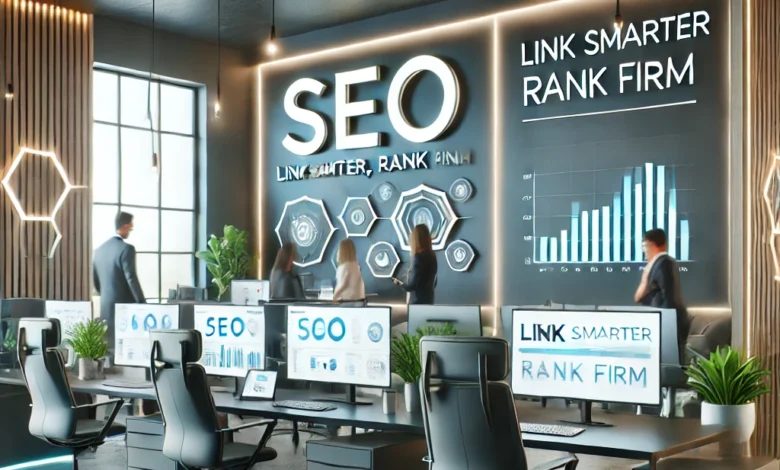How SEO Can Help a Website Get More Sales

In today’s digital-first world, the competition for visibility online has never been fiercer. Businesses of all sizes are vying for attention, and the key to standing out is an effective Search Engine Optimization (SEO) strategy. But SEO is not just about increasing website traffic—it’s about driving the right traffic that converts into sales. Here’s a look at how SEO can directly impact a website’s ability to generate more sales and foster sustainable business growth. With so many free SEO tools available there really isn’t a better time than now. For example Any Software You Want.
1. Increased Visibility and Organic Traffic
The first and most obvious benefit of SEO is improved visibility. When your website appears on the first page of search engine results pages (SERPs) for relevant keywords, it’s more likely to attract clicks. Studies show that the first page of Google captures over 90% of search traffic, with the top three results receiving the lion’s share.
By optimizing your website for high-value keywords, you can attract users actively searching for the products or services you offer. These users already have intent, meaning they are more likely to convert into customers. For example, a local bakery optimized for keywords like “best bakery near me” or “custom birthday cakes” can draw in potential customers who are ready to make a purchase.
2. Targeting the Right Audience
SEO allows you to target specific demographics, geographic locations, and customer intents. Tools like Google Keyword Planner, SEMrush, and Ahrefs help businesses identify what their ideal customers are searching for and tailor content accordingly.
For instance, long-tail keywords such as “affordable eco-friendly running shoes” attract a niche audience with high purchasing intent. These users know what they want and are further down the sales funnel, making them more likely to convert than someone searching generically for “shoes.”
By targeting the right audience, SEO ensures your traffic is qualified, leading to higher conversion rates and more sales.
3. Building Trust and Credibility
Appearing on the first page of search results doesn’t just bring more clicks—it builds trust and credibility. Users perceive websites ranked highly by Google as authoritative and reliable. Factors like high-quality content, backlinks from reputable sites, and good user experience (UX) signal to both search engines and users that your website is worth visiting.
A strong SEO strategy includes creating informative blog posts, FAQs, and product guides that establish your expertise in your niche. This not only improves rankings but also reassures potential customers that your brand is trustworthy, increasing the likelihood of sales.
4. Improving User Experience
SEO goes hand-in-hand with user experience (UX). Google’s algorithm prioritizes websites that are fast, mobile-friendly, and easy to navigate. These factors also play a critical role in converting visitors into customers. If users land on your website and encounter slow load times, broken links, or confusing layouts, they are likely to leave without making a purchase.
Optimizing your website for SEO ensures it meets these essential UX criteria, providing a seamless journey from landing page to checkout. For instance, compressing images for faster load times, ensuring intuitive site navigation, and making the site mobile-responsive all contribute to better sales performance.
5. Enhancing Local SEO for In-Person Sales
For businesses with a physical presence, local SEO is a game-changer. Optimizing for local search queries, such as “near me” searches, helps connect businesses with customers in their vicinity. This involves creating a Google Business Profile, collecting reviews, and ensuring your name, address, and phone number (NAP) are consistent across directories.
Imagine a customer searching for “coffee shop near me” during their lunch break. By optimizing for local SEO, your business can appear in the local 3-pack—a highly visible area on Google Maps—making it easy for users to find and visit you.
6. Cost-Effective Marketing
Compared to paid advertising, SEO is a cost-effective way to drive sales. While it requires an upfront investment in terms of time and resources, the long-term benefits far outweigh the costs. Organic traffic is essentially free, and once you achieve a high ranking, the ongoing maintenance costs are minimal compared to continually running ad campaigns.
Moreover, the leads generated through organic search often have a higher ROI than those from paid channels, as they are more targeted and relevant.
7. Gaining Insights into Customer Behavior
SEO tools provide valuable data about your audience’s preferences, behavior, and pain points. Analytics platforms like Google Analytics show what keywords users search for, which pages they visit, and how long they stay on your site. This information can guide your overall sales strategy, helping you create targeted offers and improve your conversion funnel.
For example, if data reveals that a blog post about “choosing the right DSLR camera” drives significant traffic, you can optimize your product pages for related terms and offer special promotions on cameras to convert these visitors into buyers.
8. Creating Evergreen Content for Long-Term Results
One of the unique benefits of SEO is its longevity. Unlike paid ads, which stop generating traffic the moment you cut the budget, SEO-optimized content can continue driving traffic and sales for months or even years. By creating evergreen content, such as how-to guides, product comparisons, and industry insights, you ensure your website remains relevant and visible over time.
Conclusion
SEO is more than just a tool for driving traffic; it’s a powerful strategy for increasing sales. By improving visibility, targeting the right audience, building trust, enhancing UX, and leveraging data, SEO can transform your website into a revenue-generating powerhouse.
For businesses looking to thrive in the digital age, investing in SEO is no longer optional—it’s essential. The key is to develop a comprehensive, data-driven strategy tailored to your audience’s needs and preferences. With the right approach, your website can attract more customers, build lasting relationships, and ultimately, boost your bottom line.



